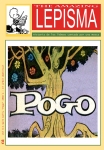 Delivering Two Kinds of Quality:
Delivering Two Kinds of Quality:Success starts with making products that work. But appealing to a customer's aesthetic taste is also essential in today's marketplace. As I write this, the petroleum executive sitting next to me on the plane has carefully unpacked his Bose QuietComfort 2 headphones and iPod nano, which has me thinking about the meaning of quality. The Japanese actually have two words for quality -- and an understanding of each is necessary to compete today.
More than 20 years after the quality craze kicked off in the U.S. (primarily because America was getting its clock cleaned by the Japanese), quality remains an elusive target for many American companies. Not that we haven't made progress. In 1980 the average car produced by Ford (F) had twice as many product flaws (as measured by J.D. Power's survey of initial quality) as the average Japanese car.
By 1986 the Japanese auto industry lead over Ford had shrunk from 100% to about 20%, as Ford made quality "Job One." But since that impressive initial spurt of progress, many U.S. companies have struggled to keep up on quality, even as the Japanese began building more of their products in the U.S. with American workers.
INNOVATION CURVE. The truth is, the Japanese have an unfair advantage. Japanese culture intrinsically values quality and appreciates the small details. In fact, the Japanese expression for quality is atarimae hinshitsu, which can be roughly translated as "taken-for-granted quality."
What do the Japanese take for granted when it comes to quality? They take for granted that things should work as they are supposed to, and they even see an elegance to things working properly -- whether it's cars, subway schedules, traditional flower arranging, or the famous tea ceremony.
Japanese manufacturers were so obsessed with taken-for-granted quality that they created a constant stream of innovations that built on renowned quality-management consultant Ed Deming's original concepts: lean manufacturing, just-in-time industry, and design for quality. In today's competitive markets, manufacturers need to be very far along this quality innovation curve -- or moving along it very quickly. If they are not, you can take for granted that they will go out of business.
This is true even for small, entrepreneurial companies. The ability to create products and services that work is no longer a source of long-term competitive advantage. It has become just the price of admission to most markets. If the stuff your competitors make works better, your customers aren't going to be customers for long.
QUALITY ZEALOTS. Though much improved, America's quality record still isn't what it might be. Here are two traps I've seen a lot of companies fall into on the road to quality.
1. Faking a commitment. There's no way around it. Whether you're adopting total quality management (TQM), continuous improvement, or Six Sigma, these techniques require everyone in a company to learn how to think and work differently. Too many senior executives grab onto the fad phrases as they come and go -- from TQM to lean manufacturing and now Six Sigma -- without taking the time to learn what these processes are and how they work. They leave the nitty gritty of quality to the folks below them -- a sure way to have a quality program fail.
2. Letting the quality zealots run wild. On the other extreme, some companies become so quality-process obsessed that quality-management techniques cease to be a tool to improve the company's performance and instead become an end in themselves. Statistical analysis should be used for questions for which a company doesn't readily have a "good enough" answer. Instead, organizations sometimes go through long analytical processes for problems that a little common sense could have solved.
Quality-management techniques work very well for certain processes and applications -- but their efficacy is less clear in areas like sales. Nothing sours an organization on quality faster than meaningless quality busywork. Perhaps the biggest risk to companies engaged in statistical process-control methods, such as TQM and Six Sigma, is that they may lose sight of the fact that controlling errors is only part of the game.
MODERN MARVELS. That brings us to the second of the two Japanese expressions for quality: miryoku teki hinshitsu, which means "bewitching" or "enchanting quality." This kind of quality appeals not to customer expectations and reliability (that things should do what they're supposed to), but rather to a person's aesthetic sense of beauty and elegance.
That's what I think Apple Computer (AAPL) got right with the iPod and its many offspring. The nano belonging to the man sitting next to me is a marvel, not just of miniaturization, but of rounded edges in a world of sharp corners.
And as I put on my own Bose headphones, I realize how much I appreciate being able to retreat to my Zen space amid the rumble of the aircraft engines, rattling serving carts, and chattering cabin mates. If these products didn't work properly when you turned them on, nobody would buy them. They would lack atarimae hinshitsu. But with the hungry competitors in most markets today, taken-for-granted quality by itself may not get the job done.
Thanks to Keith McFarland of BusinessWeek Online




























































